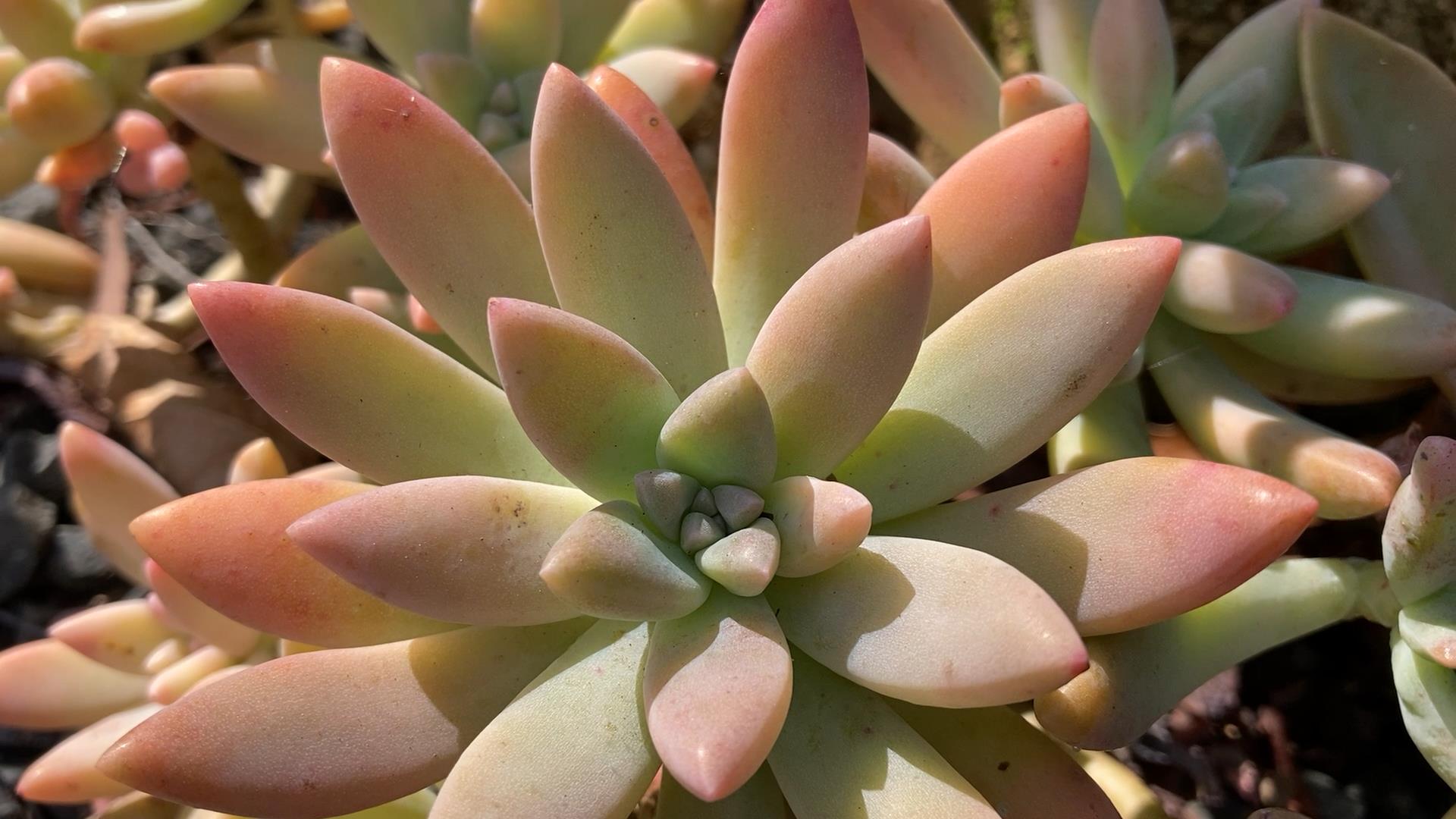Your cart is currently empty!

Sedeveria Starburst/ Graptosedum Francesco Baldi Care & Propagation
Sedeveria Starburst also known as Graptosedm Francesco Baldi is a popular hybrid succulent that can be found in many succulent gardens and collections. It’s a cross of Graptopetalum paraguayense and Sedum pachyphyllum which are two fantastic tough succulents themselves.
Starburst is one of the best beginner succulents out there. You really cannot go wrong with this beauty. It’s one of my go-to succulents when planting out a garden as it’s hardy, looks after itself and is absolutely gorgeous.
Description
Graptosedum Francesco Baldi/ Sedeveria Starburst grows thick rosettes with chunky leaves. It likes to spread and can create a lovely carpet.
Individual rosettes can grow to about 10 centimetres or 4 inches in good conditions. The whole plant can measure much larger and spread almost indefinitely, as long as the conditions are favourable for growth. As the plant spreads and new rosettes shoot out, they send roots of their own.
Starburst can turn a variety of colours from pale green, blue-grey to orange and light pink. The colours are best in cooler weather and when the plant is exposed to direct sun.
Flowers usually appear in late winter or spring and can grow out of the rosettes on tall stalks. They are yellow in color and each stalk holds over 10 individual flowers.
Position & Care
Sedeveria Starburst grows best in a sunny position but will also tolerate part shade and full shade. The shadier the position the paler the plant will get. In shade Starburst is also likely to grow slower with leaves spread apart.
This succulent is not a good indoor plant and is likely to eventually die unless the house is incredibly bright with lots of sunlight throughout the day.
Sedeveria Starburst can easily be grown in pots and garden. In the garden it will pretty much look after itself, though, it is best to plant where water doesn’t pool after rain. Raised gardens or slopes are best for any succulent.
Starburst is a rapidly growing succulent and may need reporting yearly if you want it to keep growing. However, being rootbound is not a huge problem for this plant and it can stay in one pot for some years.
Water is not a problem for Starbucks either and it will tolerate over watering as long as the potting mix is well draining and the pot has a hole/ it doesn’t sit in soggy soil in the garden.
During dry spells or if undercover water when the potting mix dries out completely Starburst is a very hardy plant that is likely to live through extreme heat and also some frosts.
During heatwaves this plant can suffer sunburn when exposed to direct sun but, it is unlikely to die. It is said Sedeveria Starburst will tolerate harsher frost but I would exercise caution if you live in a climate with regular frost and snow in winter.
Propagation
Starburst is incredibly easy to propagate. If you’re a beginner this plant is perfect to practice on. Leaf, cuttings and seed propagation is possible, however, I would not bother with trying to raise Starburst from seed as it takes a long time to get the seedlings to a decent size.
To propagate from leaf, simply pull the most bottom ones off to the side. The whole leaf needs to come off and nothing of it can be left on the stalk. Broken leaves are unlikely to produce new growth. Take the nice plum leaves and discard any shrivelling or yellowing ones.
It is best to do leaf propagation Spring- early Summer so the leaves have a good chance of getting established before cooler months return.
Cuttings are easy to propagate too. Simply cut off with clean scissors and leave for 24 hours in bright but shaded spot so the wound created by the cut has a chance to dry and heal. This will prevent disease and bacteria from entering through the fresh cut.
Pests
Starburst is prone to all the succulent pests such as aphids, mealybugs, caterpillar snails and slugs.
Aphids are particularly prevalent during flowering and mealybugs can hide deep in between the leaves
When bigger chunks are missing slugs, snails, caterpillars or grasshoppers are likely to be the perpetrators